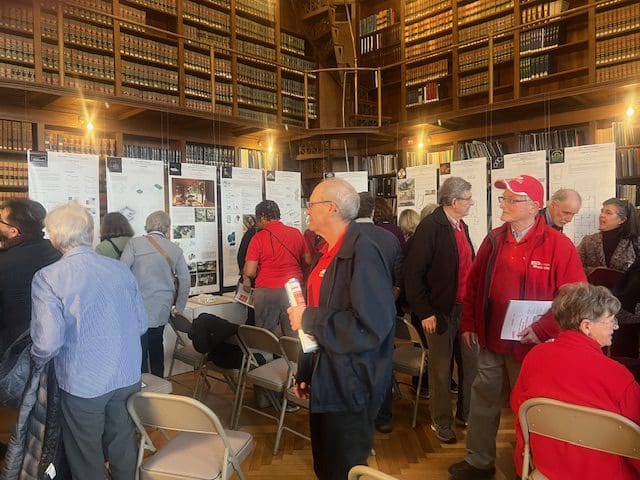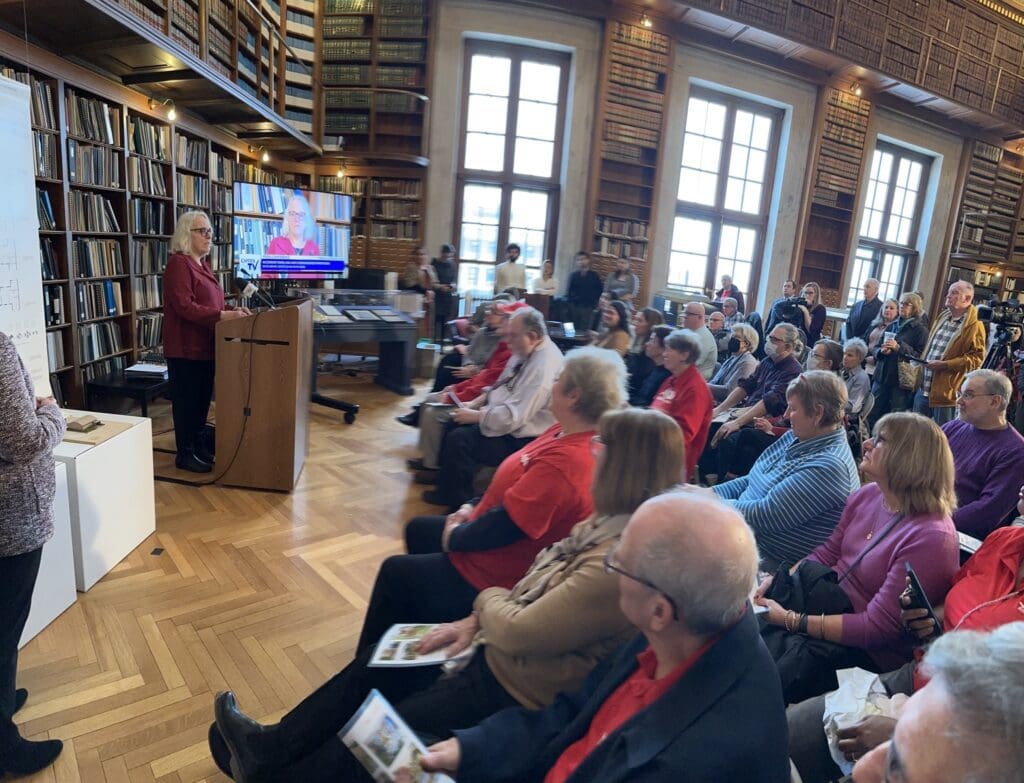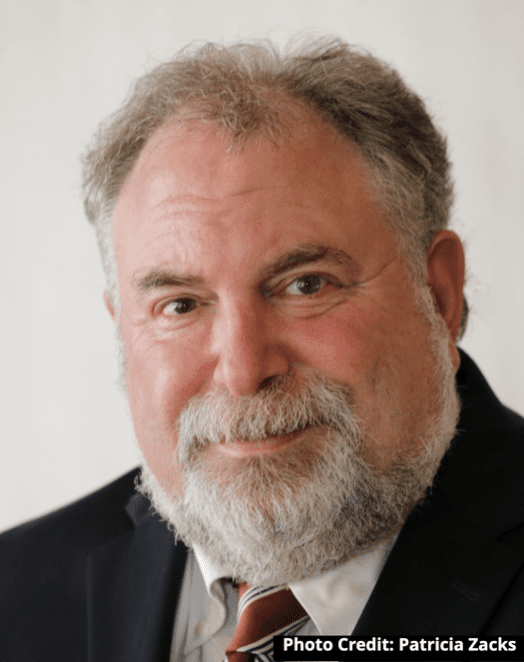Search Posts
Recent Posts
- To Do in RI: 2-day Newport Flower Show – Authors on floral design to speak June 21, 2025
- In the News… quick recap of the week’s news 6.21.25 June 21, 2025
- Providence Art Club Prestigious National Open Juried Exhibition Begins June 21, 2025
- Burn with Kearns: “30-day Shreds” Fail the 50+ Market. What To Do. – Kevin Kearns June 21, 2025
- Rhode Island Weekend Weather for June 21/22, 2025 – Jack Donnelly June 21, 2025
Categories
Subscribe!
Thanks for subscribing! Please check your email for further instructions.

AARP and RISD showcase ADU concepts and designs on Smith Hill – by Herb Weiss
by Herb Weiss, contributing writer on aging issues
During a 45-minute press conference held Thursday in the Library of the Rhode Island State House, AARP Rhode Island and Rhode Island School of Design (RISD) showcased a RISD student design competition displaying Accessory Dwelling Unit (ADU) designs created by 10 RISD student teams, consisting of 10 students per team.
The ADU concepts were developed following a prompt that RISD and AARP RI posed to Interior Architecture students in November, challenging them to develop creative ADU concepts that would illustrate the range of benefits this housing option can offer for people to age in place at home. Unveiling these ADU concepts at the Jan 25th press conference just one hour before a scheduled hearing of the House Committee on Municipal Government that would hear seven bills related to zoning standards for ADUs was just a coincidence, says AARP Rhode Island State Director Catherine Taylor, noting that the design project began over one year ago.
One of the scheduled bills, H 7062, reintroduced by Rep. June S. Speakman (District 68, Bristol/Warren), chairwoman of the House Commission on Housing Affordability and strongly supported by House Speaker K. Joseph Shekarchi (District 23, Warwick), would boost the state’s housing production by helping boost housing production by helping Rhode Islanders to develop ADUs on their property. It would provide homeowners the right to develop an ADU within the existing footprint of their structures or on any lot larger than 20,000 square feet, provided that the design satisfies building code, size limits and infrastructure requirements.
Lawmakers, state officials, municipal planners, affordable housing advocates, members of the AARP Red Rhode Island Team, and aging advocates, gathered in the packed library room to view the well-considered designs unveiled at the press conference. At the conclusion of the event, it was announced that Team Seven’s design concept was selected by a panel of judges.
Advocating for ADU-friendly state zoning laws
“You see here today some truly innovative ADU concepts,” said AARP Rhode Island’s Catherine Taylor, who served as the press conference’s master of ceremonies. “The RISD Interior Architecture students have earned our admiration for both their creativity and their clear understanding of the housing needs of older adults, she said, thanking RISD faculty members – led by Wolfgang Max Rudorf and Elizabeth Debs – who embraced this project.
“People thinking of downsizing, hoping to be near families and caregivers, or wanting to stay in a familiar community as they grow older, are very interested in ADUs as flexible and affordable housing options,” said Taylor.
“The inspiring work by these talented RISD students will help raise awareness of the many ways ADUs can be designed to meet the needs of older Rhode Islanders and their families,” adds Taylor. “We’re delighted to display these exciting designs at the State House so that lawmakers and their constituents can see for themselves why ADUs make so much sense.”
House Speaker Shekarchi noted that the design proposals were a great way to leverage some of the incredible talent in Rhode Island to find creative solutions to one of the state’s biggest challenges, its housing crisis. “The competition also raises the dialogue – it gets people talking about ADUs, how they can add to our community, and how they can be functional and created,” says Shekarchi.
Looking back, Shekarchi told the packed room that the House passed legislation to make it easier for homeowners to add an ADU to their home. “Unfortunately, it did not pass the Senate, but I’m hopeful we can get it over the finish line this year,” he pledged.
Senator Megan E. Kallman (District 15, Pawtucket, Providence), who sponsored ADU legislation in the lower chamber last year, came to the press conference to “check out some amazing student generated ADU design concepts,” calling ADUs the absolute game changers. “Their benefits extend to all corners of our communities… and people of all ages, from all walks of life.”
Senator Victoria Gu (District 38, Westerly, Charlestown and South Kingston), who is expected to introduce H 7062’s companion measure in the Senate attended the press conference, identifying ADUs as a key component of housing supply. “When you look across the country, ADUs will get people housed in the short term because they are faster to construct or renovate when compared to new construction. We need that solution here now more than ever,” she said.
Like the other speakers, Rep. Speakman observed that “ADUs is an easy idea to run with,” taking allocating her time at the podium to thank and address the RISD students who participated in this project. “Architects often tell me that form follows function. We told you what the function is and you have given us beautiful form. This helps us to make our case for ADUs to those who are unfamiliar with the form. They can take a look at your work to see how they can beautifully fit into neighborhoods into yards, notes Speakman, a political science professor who teaches at Roger Williams University.
“In the Interior Architecture department at RISD, we look for opportunities to use design as a way to explore pressing community needs with collaborators who are experts in their fields,” noted faculty member Elizabeth Debs. “AARP has been stellar to work with – in only a few days, students quickly learned important strategies for aging in place, as well as universal design approaches they will be able to use throughout their careers.,” she says.
According to Debs, the sophisticated and nuanced proposals showed an understanding of designing for a range of populations and abilities, and created sensitive, barrier-free designs that focused on well-being. “The students really absorbed the important issues presented by AARP and demonstrated empathy for the different populations that need ADUs through the designs,” she said.
ADU Contest Criteria
RISD Interior Architecture faculty encouraged student teams to create designs with an overall goal of thoughtfully increasing the production of ADUs that support aging in place. Criteria included:
Siting Consider the relationship to primary structure and neighboring lots through design to enhance privacy and a balance between independence, safety, and support. When siting the structure consider paths of access, solar orientation, view lines, impact to the site/landscape, and access to vehicles.
Diverse family and household types Accommodate the needs of older adults, disabled persons, caregivers, and renters.
Age-Friendly Design for aging-in-place by incorporating age-friendly features. The size and use of these dwellings will require that they be single story, and reachable via a graded entry. Proposals should include universal design features and be adaptable over time.
Affordability Encourage designs that are lower cost to construct and maintain to make them financially accessible to households with the widest possible range of incomes.
Sustainability Plan for long term environmental impacts, including initial construction, life cycle considerations, material selection, energy and resource conservation etc.
Innovative construction methods Support new construction and delivery methods, such as panelized, modular, or prefabricated homes.
At a minimum, the ADU designs were expected to include facilities for food preparation and eating, bathing and toileting, sleeping, recreation, storage, utilities, and outdoor use. The building size may vary from a minimum of 350 square feet to a maximum of 900 square feet.






















ADUs Are Part of the Solution



Photos: John Martin AARP Rhode Island
“The AARP Livability Index shows that all communities have room to improve to ensure that residents of all ages are active, engaged, and supported, particularly when it comes to affordable housing options,” said Rodney Harrell, PhD, AARP Vice President of Family, Home, and Community. “Everyone has a role to play – from community members to researchers, to local advocates and policymakers – to help fill the gaps between what people want and need and what their communities provide, so more older adults can live independently.”
“We must reframe how we think about housing as we grow older, and ADUs are part of the equation,” added Taylor. “Aging in community is possible if homes can be modified to accommodate changing needs. Our cities and towns must have housing options that are suitable for differing incomes, ages and life stages. ADUs are one way to accomplish this goal.”
To watch the press conference, go to: https://capitoltvri.cablecast.tv/show/162?site=1.
To read this week’s story on ADUs, go to:
___
To access all of Herb’s articles published by RINewstoday, go to https://rinewstoday.com/herb-weiss/

Herb Weiss, LRI -12, is a Pawtucket-based writer who has covered aging, health care and medical issues for over 43 years. To purchase his books, Taking Charge: Collected Stories on Aging Boldly and a sequel, compiling weekly published articles, go to herbweiss.com.

.
